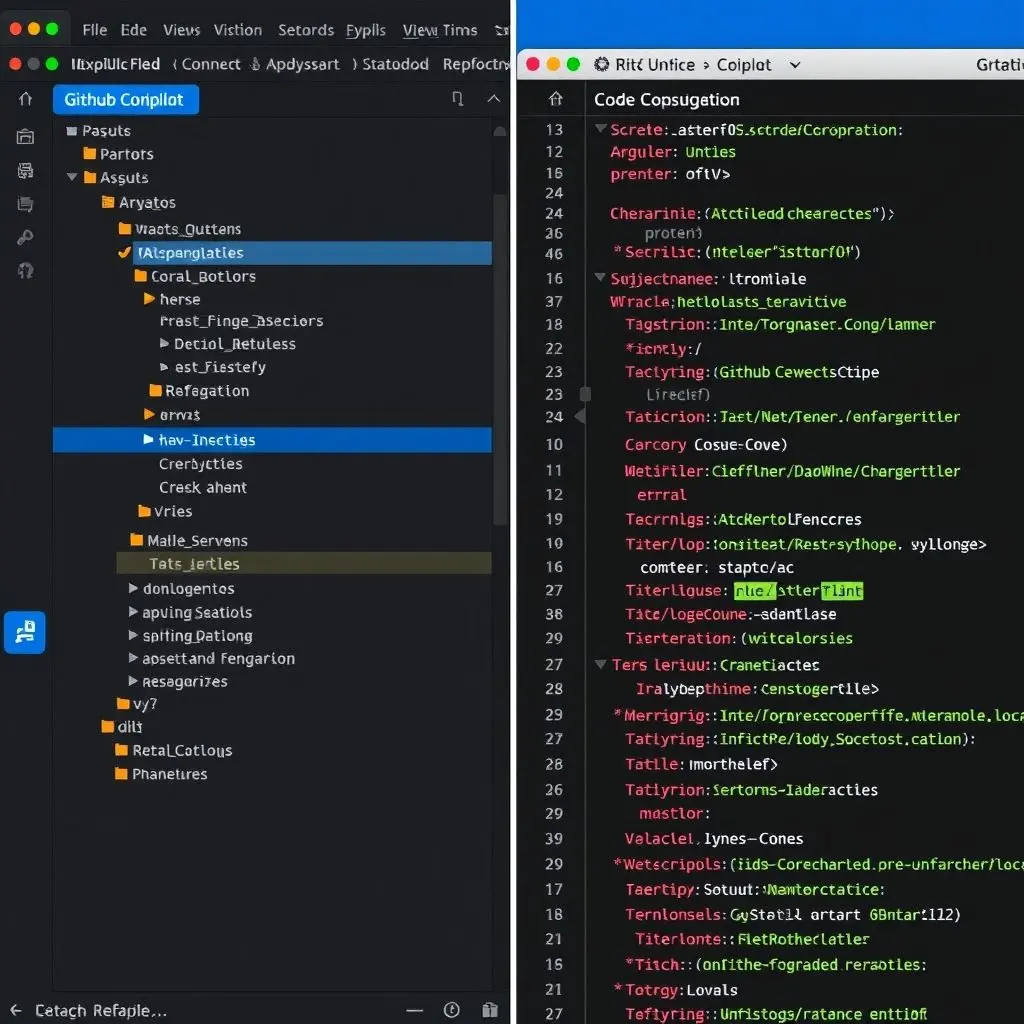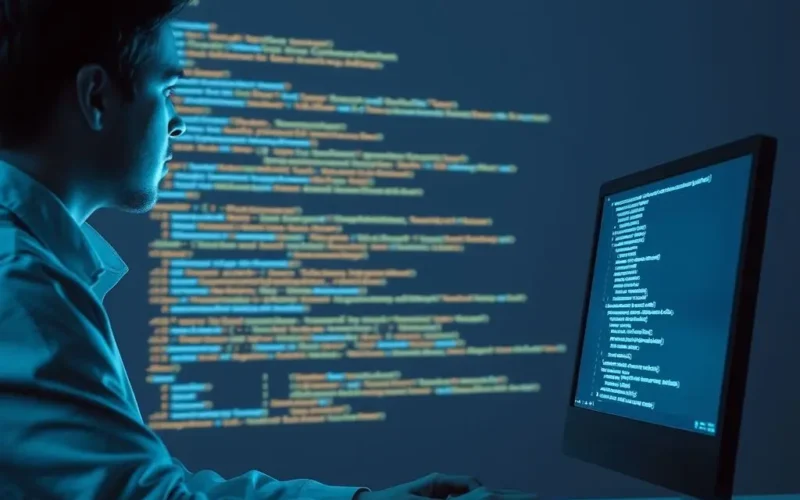Alright developers, imagine this: a world where your code flows almost automatically, where boilerplate melts away, and complex logic forms with surprising speed. For years, this felt like a distant sci-fi fantasy, a developer’s ultimate wish. But guess what? That dream is rapidly turning into reality.
We’re not talking about magic wands here, but about incredibly sophisticated Artificial Intelligence tools. These aren’t just glorified autocomplete features; they’re becoming powerful coding sidekicks, capable of suggesting lines, finding and fixing pesky bugs, and even generating entire functions or blocks of code based on simple natural language descriptions.
Think about names like GitHub Copilot, Google’s AlphaCode, and others emerging rapidly in the space. These tools learn from truly massive datasets of publicly available code, understanding patterns, syntax, and common programming paradigms across multiple languages.
Before we dive deeper into the nitty-gritty of how these digital assistants are reshaping our workflow, perhaps a quick visual snapshot helps set the stage:
Caught that? Good. Now, let’s explore this fascinating evolution in the world of code.
Table of Contents
What Exactly is AI Code Generation?
At its core, AI code generation involves using machine learning models, particularly large language models (LLMs) trained on code, to predict and produce programming code. Instead of predicting the next word in a sentence, these models predict the next token (which could be part of a variable name, a keyword, an operator, etc.) in a sequence of code, based on the context they are given (the code already written, comments, function names, etc.).
These models learn from observing millions or billions of lines of code found in public repositories. They pick up on common patterns, functions, algorithms, and even coding styles. When you provide a prompt – which could be a comment explaining what you want, a function signature, or just the start of a line – the AI uses its training to suggest the most probable and relevant code to follow.

Beyond Autocomplete: Capabilities That Impress
Early coding tools offered simple syntax highlighting and basic autocompletion based on predefined rules or words in the current file. Modern AI coding assistants are vastly more powerful:
- Code Suggestion and Completion: This is the most visible function. As you type, the AI suggests entire lines, blocks, or even full functions that match your intent. It can often infer your goal from comments or function names.
- Generating Boilerplate Code: Need a standard class structure, a loop, or a common function like reading a file? AI can often generate the basic structure instantly, saving significant typing time.
- Translating Comments to Code: You can write a comment describing what a piece of code should do, and the AI will attempt to write the code for you.
- Bug Detection and Fixing: Some tools are integrating capabilities to analyze your code for potential errors, suggest fixes, or even automatically apply patches.
- Refactoring Assistance: While perhaps less mature, AI can sometimes suggest ways to improve existing code for readability or performance.
- Generating Test Cases: Based on a function’s code or description, AI can suggest potential unit tests.
These capabilities mean that the AI isn’t just guessing the next few characters; it’s attempting to understand the *semantic* intent of the code being written.
Prominent Players in the AI Coding Arena
The field is evolving rapidly, but a few names have gained significant traction:
GitHub Copilot: Developed in collaboration with OpenAI, Copilot was one of the first widely available AI pair programmers. It integrates directly into popular IDEs and provides suggestions in real-time based on the context of your project files.

AlphaCode: Developed by DeepMind (Google), AlphaCode is designed to excel at competitive programming problems. While not yet a consumer-facing tool in the same way as Copilot, its ability to generate solutions to complex algorithmic challenges demonstrates the potential for AI to handle more intricate coding tasks.
Many other companies and open-source projects are developing similar tools, often specialized for specific languages, frameworks, or tasks.
The Developer’s New Workflow: Collaboration, Not Replacement
This is a critical point. These AI tools are designed to be assistants, not substitutes. They change the nature of programming in several ways:
- Accelerated Development Cycles: By automating repetitive tasks and providing instant suggestions, AI significantly speeds up the writing process.
- Reduced Mental Overhead: Developers spend less time looking up syntax or remembering specific API calls for common tasks. The AI provides them contextually.
- Learning and Exploration: AI can suggest different ways to implement a feature or introduce developers to libraries and functions they might not have known about.
- Focus on Complex Problems: With the AI handling the boilerplate and simpler parts, developers are freed up to concentrate on the more challenging, creative, and architectural aspects of software design.
- Constant Review and Assistance: It’s like having an expert pair programmer constantly offering suggestions and pointing out potential issues, even if the ‘expertise’ is statistical rather than based on deep understanding.
The job shifts from typing every character to guiding, reviewing, and refining the code suggested by the AI. It requires understanding the AI’s output, ensuring its correctness, and integrating it effectively.
Challenges and Considerations
While powerful, AI code generation tools are not without their limitations and raising important questions:
- Accuracy and Correctness: AI-generated code is not always perfect. It can contain bugs, security vulnerabilities, or simply be inefficient or incorrect for the specific context. Developers must rigorously review and test AI-generated code.
- Understanding Context: While improving, AI can sometimes misunderstand the broader context of a large codebase or a complex problem, leading to inappropriate suggestions.
- Security Risks: Since models are trained on public code, there’s a potential risk of them suggesting code snippets that contain security flaws or sensitive patterns learned from vulnerable examples. Using cloud-based AI services also raises concerns about potentially transmitting proprietary code for processing.
- Licensing Issues: The training data for these models includes code under various open-source licenses. There are ongoing discussions and legal questions about whether code generated by these AIs might inherit licensing obligations from its training data.
- Over-Reliance: Developers might become overly reliant on AI, potentially hindering their own learning and problem-solving skills if not used judiciously.
- Boilerplate vs. Innovation: AI is currently best at generating common patterns and boilerplate. Truly novel or highly domain-specific code still requires significant human expertise.

Navigating these challenges requires awareness, best practices in reviewing AI output, and potentially new tools for verifying AI-generated code.
Frequently Asked Questions About AI and Coding
Here are some common questions developers and others have about AI code generation:
Q: Will AI replace software developers?
A: The overwhelming consensus is no, at least not in the foreseeable future. AI tools are powerful assistants that automate parts of the job, but they lack the creativity, critical thinking, understanding of complex business requirements, debugging complex systems, and collaborative skills that human developers possess. The role is likely to evolve, requiring developers to become adept at guiding and verifying AI-generated code.
Q: Do I still need to learn how to code if AI can write it?
A: Absolutely. Think of it like a car with GPS and cruise control. These tools assist the driver, but you still need to know *how* to drive, understand the rules of the road, and navigate unforeseen situations. You need to understand code to guide the AI, identify errors in its output, integrate it into your project, and handle everything the AI *cannot* do.
Q: Is AI-generated code safe to use?
A: Not without careful review and testing. As mentioned, it can contain bugs or security vulnerabilities. Treat AI suggestions like code from a junior developer – helpful, but requiring verification by an experienced professional.
Q: How do these tools learn?
A: They are typically trained on massive datasets of public code from sources like GitHub. They use complex machine learning architectures (often based on transformers) to learn the patterns, syntax, and structures within this code.
Navigating the Shifting Landscape
The integration of AI into the coding process is not a passing fad; it’s a fundamental shift. Just as compilers, IDEs, and version control systems changed how we write software, AI coding assistants are poised to be the next evolutionary step. They are tools that enhance productivity, allowing developers to potentially build faster and focus on higher-value tasks.
Embracing these tools, understanding their strengths and weaknesses, and adapting our workflows are key to thriving in this changing landscape. The future of coding isn’t about AI replacing humans, but about powerful human-AI collaboration unlocking new levels of speed and innovation. In the world of tech, change isn’t a bug; it truly is a feature.





